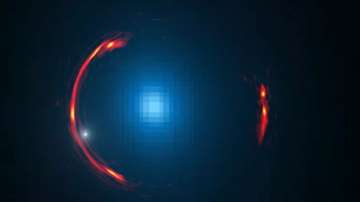A team of scientists from the Harvard and Smithsonian Centre for Astrophysics, Cambridge, Institute for Computational Cosmology of Durham University, the UK, Max-Planck Institute in Germany and Key Laboratory for Computational Astrophysics of the Chinese Academy of Sciences ran a detailed simulation of dark matter. According to reports, the team of scientists assumed that dark matter consists of weakly interacting massive particles (WIMPs) with a mass about 100 times that of a proton.
The creation of simulated universe has helped scientists to reveals clumps of dark matter surrounding galaxies. This revelation suggests that future experiment with powerful telescope might be beneficials in finding out more about the mysteries about dark matter.
As per Sputnik's report, dark matter formed in halos around galaxies, as observed previously, with the halos also developing at all mass scales, from small, planet-mass halos to huge halos formed around clusters of galaxies.
These halos are most dense toward their center, becoming more diffuse at their edges with the fact that this occurs at all scales making it an explicit feature of dark matter, says the study.
The small scale halos, albeit too miniscule to be detected through their gravitational influence on light, could potentially shed light on how dark matter interacts with itself.
Dark matter, a substance making up the majority of matter in the universe, is shrouded in mystery, as it hasn't been directly observed, albeit evidence of it is seen in the structure and cluster of galaxies.
Comprising around 83 percent of all matter, its properties are as yet unknown by science.
However, new research suggests that the hunt for it is expanding to new places.
The LISA telescope, a space-based gravitational wave observatory building on the success of LISA Pathfinder and LIGO, led by the European Space Agency (ESA) is seen as a tool to potentially achieve a breakthrough.
The LISA mission presents a collaboration of ESA, NASA, and an international consortium of scientists, with the anticipated launch date set for the 2030s.
According to reports, this telescope could also hunt for a dark matter signal in a novel way, through gravitational waves. These are ripples in space and time sent out by colliding black holes.
The results of the collaborative new study, “Universal structure of dark matter haloes over a mass range of 20 orders of magnitude”, were published in the journal Nature on 2 September.
